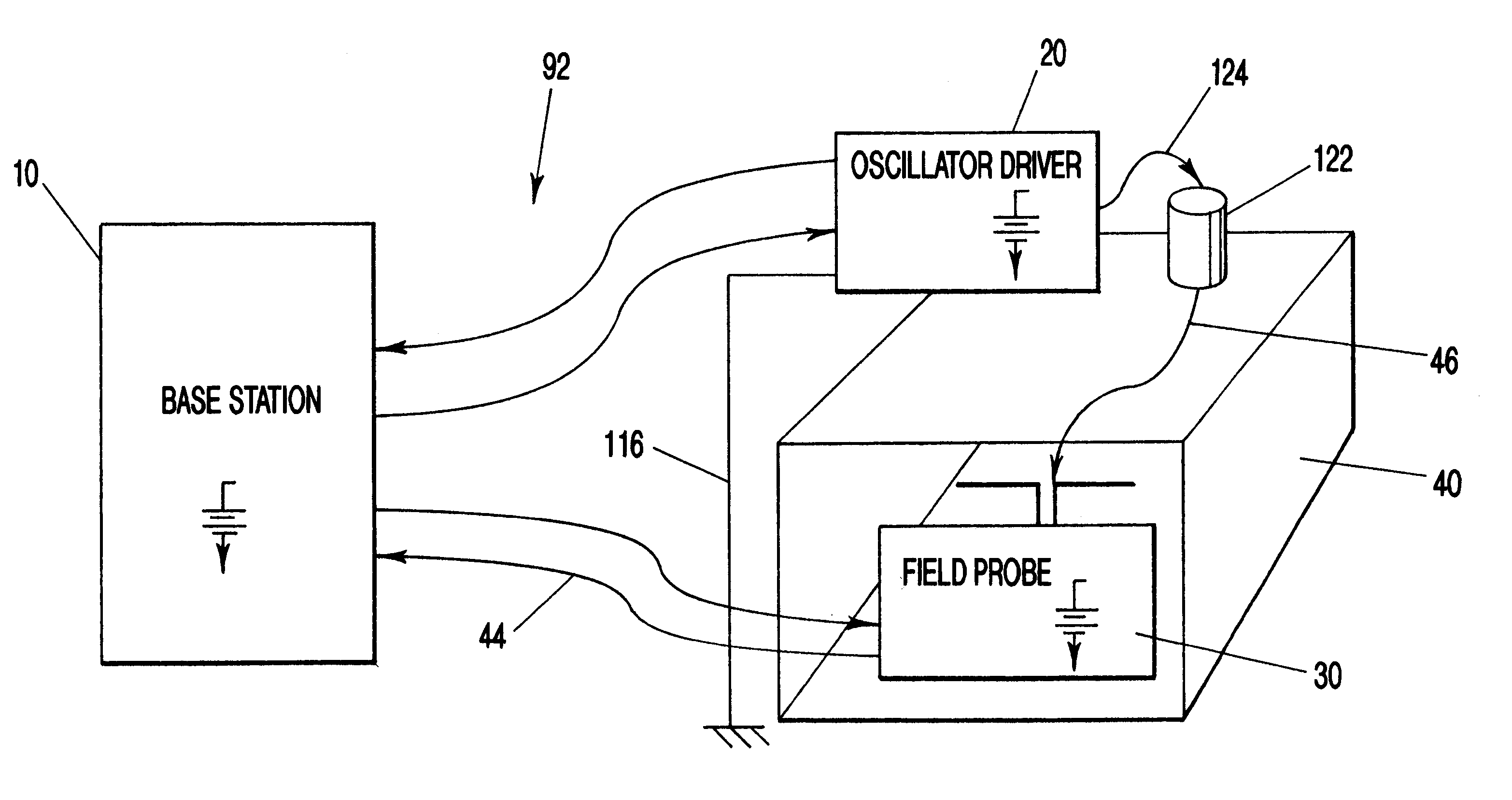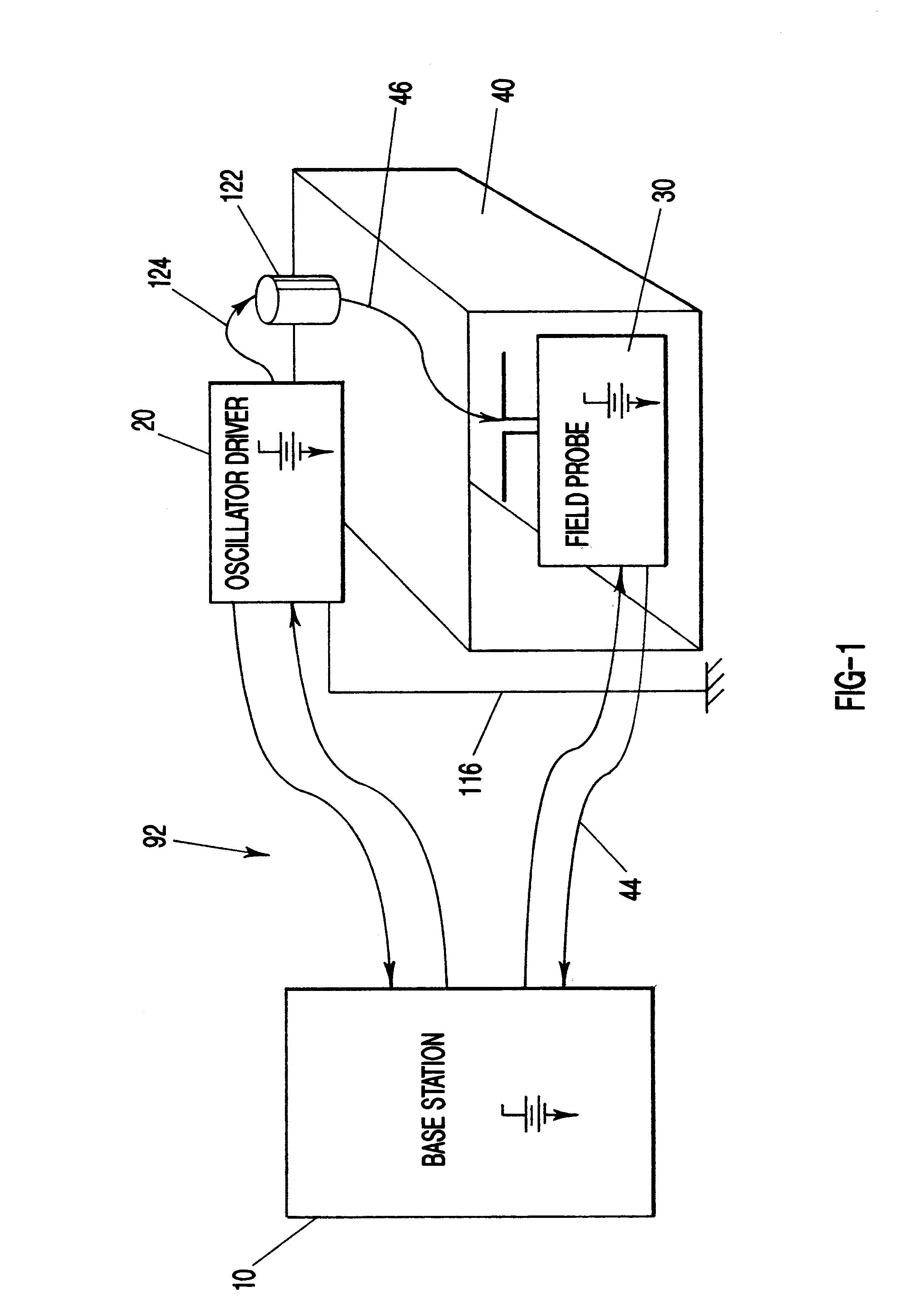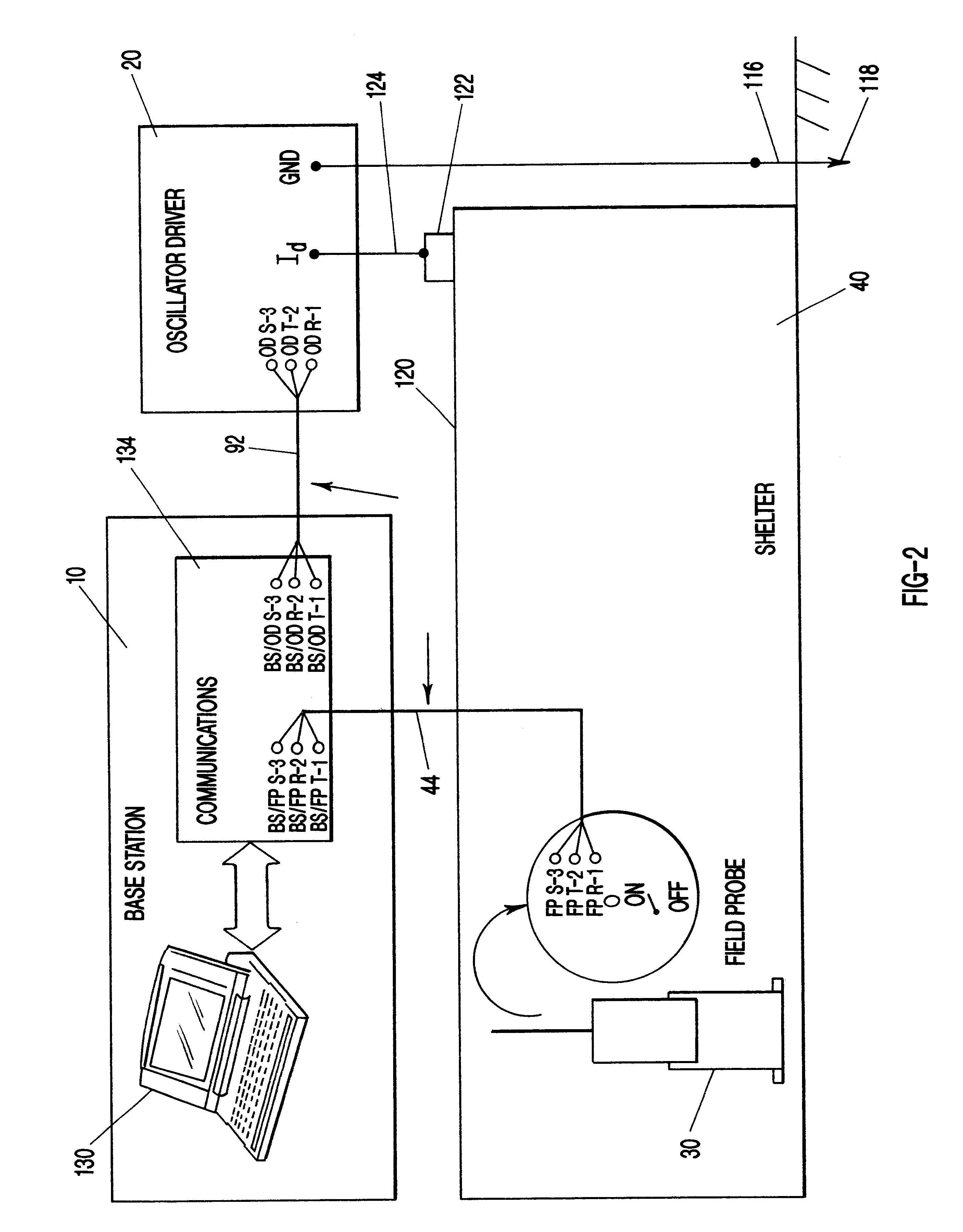Transfer impedance measurement instrument system
a technology of transfer impedance and measurement instrument, which is applied in the direction of instruments, mechanical roughness/irregularity measurement, mechanical measuring arrangement, etc., can solve the problems of high-value electronics, human life is particularly vulnerable to the effects of lightning, and it is not known how most buildings will fare in protecting their contents
- Summary
- Abstract
- Description
- Claims
- Application Information
AI Technical Summary
Problems solved by technology
Method used
Image
Examples
example
Synchronous Detection as Implemented in TIMIS
This discussion considers the processing of the various TIMIS measurement information to determine the received electric field voltage at the field probe and subsequently to determine the transfer impedance function. This processing occurs both in hardware and firmware at the field probe and oscillator driver, and in the base station software.
The signal S.sub.1 is the output of preamplifier 50 (of FIG. 5), amplified V.sub.ef, in response to the structure excitation by I.sub.d, the drive current. Upper-case signal names in this discussion indicate the frequency domain; lower-case signal names indicate the time domain.
s.sub.1 (t)=AV.sub.ef (t)=Asin (2.pi.ft+.phi.)=Asin (u+.phi.)
where:
u=2 .pi.ft
f--frequency, t--time
V.sub.ef (t)=A.sub.p sin (2 .pi.ft+.phi..sub.p)
V.sub.ef (t), V.sub.ef --electric field voltage at the probe
A=G.sub.a G.sub.pa A.sub.p
A.sub.p --amplitude of the electric field voltage
.phi..sub.p --phase of the electric field voltag...
PUM
 Login to View More
Login to View More Abstract
Description
Claims
Application Information
 Login to View More
Login to View More - R&D
- Intellectual Property
- Life Sciences
- Materials
- Tech Scout
- Unparalleled Data Quality
- Higher Quality Content
- 60% Fewer Hallucinations
Browse by: Latest US Patents, China's latest patents, Technical Efficacy Thesaurus, Application Domain, Technology Topic, Popular Technical Reports.
© 2025 PatSnap. All rights reserved.Legal|Privacy policy|Modern Slavery Act Transparency Statement|Sitemap|About US| Contact US: help@patsnap.com



